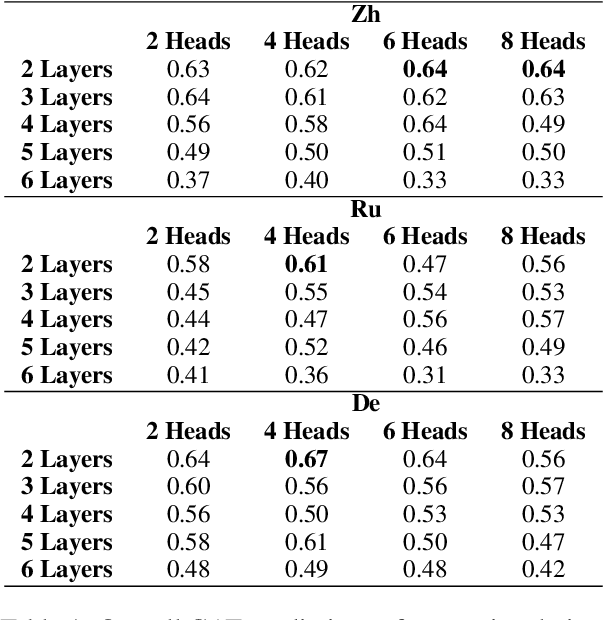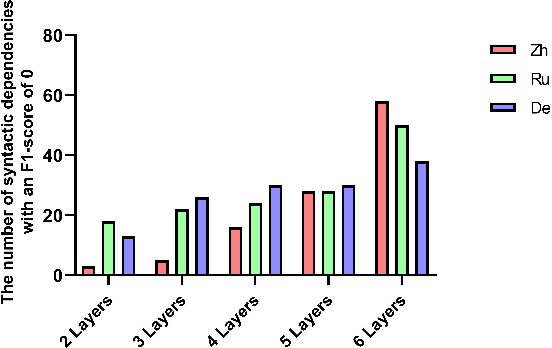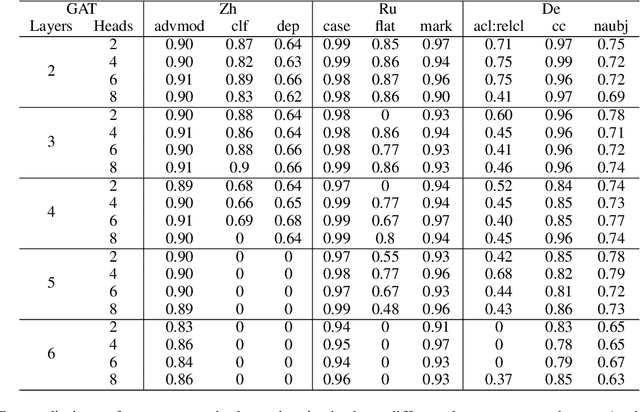Yuqian Dai
GATology for Linguistics: What Syntactic Dependencies It Knows
May 22, 2023



Abstract:Graph Attention Network (GAT) is a graph neural network which is one of the strategies for modeling and representing explicit syntactic knowledge and can work with pre-trained models, such as BERT, in downstream tasks. Currently, there is still a lack of investigation into how GAT learns syntactic knowledge from the perspective of model structure. As one of the strategies for modeling explicit syntactic knowledge, GAT and BERT have never been applied and discussed in Machine Translation (MT) scenarios. We design a dependency relation prediction task to study how GAT learns syntactic knowledge of three languages as a function of the number of attention heads and layers. We also use a paired t-test and F1-score to clarify the differences in syntactic dependency prediction between GAT and BERT fine-tuned by the MT task (MT-B). The experiments show that better performance can be achieved by appropriately increasing the number of attention heads with two GAT layers. With more than two layers, learning suffers. Moreover, GAT is more competitive in training speed and syntactic dependency prediction than MT-B, which may reveal a better incorporation of modeling explicit syntactic knowledge and the possibility of combining GAT and BERT in the MT tasks.
Syntactic Knowledge via Graph Attention with BERT in Machine Translation
May 22, 2023Abstract:Although the Transformer model can effectively acquire context features via a self-attention mechanism, deeper syntactic knowledge is still not effectively modeled. To alleviate the above problem, we propose Syntactic knowledge via Graph attention with BERT (SGB) in Machine Translation (MT) scenarios. Graph Attention Network (GAT) and BERT jointly represent syntactic dependency feature as explicit knowledge of the source language to enrich source language representations and guide target language generation. Our experiments use gold syntax-annotation sentences and Quality Estimation (QE) model to obtain interpretability of translation quality improvement regarding syntactic knowledge without being limited to a BLEU score. Experiments show that the proposed SGB engines improve translation quality across the three MT tasks without sacrificing BLEU scores. We investigate what length of source sentences benefits the most and what dependencies are better identified by the SGB engines. We also find that learning of specific dependency relations by GAT can be reflected in the translation quality containing such relations and that syntax on the graph leads to new modeling of syntactic aspects of source sentences in the middle and bottom layers of BERT.
 Add to Chrome
Add to Chrome Add to Firefox
Add to Firefox Add to Edge
Add to Edge